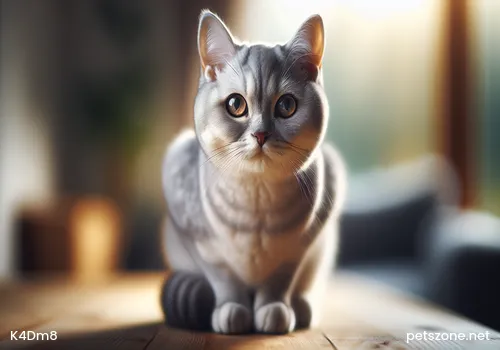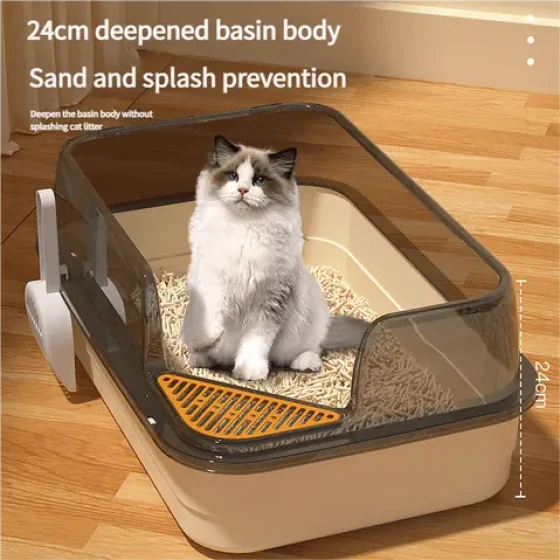Why do cats urinate everywhere?

Cats have always been clean animals. With some training from their owners, cats will consciously urinate in the litter box. However, sometimes, we frustratingly find that cats urinate in places they shouldn’t, making the indoor environment very unpleasant. In this situation, we should not immediately blame the cat but instead figure out the reasons.
Cats urinating outside the litter box may be due to health reasons or mental stress, and it is often difficult to clearly distinguish between the two. Generally speaking, cats might urinate in unusual places to get the owner's attention when feeling unwell, or to reestablish their territory by marking. The latter is mostly caused by mental stress, which often can lead to illness.
一. Pathological urination
If your cat has always been obediently using the litter box but suddenly changes where it urinates, this behavior may be due to illness. When cats experience difficulty urinating, some will choose places outside the litter box to urinate. Maybe they are thinking: "Is the gravity in the litter box not strong enough? Would it be better to try another place?"
So, what diseases cause difficulties in urination? There are mainly two types. One is urinary tract infections, including urethritis and cystitis. The other, more serious, is acute or chronic kidney failure. Cats with these diseases often squat frequently, but urinate very little. If your cat urinates everywhere and also shows symptoms of frequent urination, you should promptly take it to a veterinary hospital for examination and targeted treatment. After recovery, it will become a well-behaved cat again.
二. Stress-related urination
Cats may perform marking urination under external stimuli. However, some stimuli can cause non-marking urination. The difference is that non-marking urination resembles the cat's normal toilet posture, which is a half-squat, with urine on the floor. The pathological urination mentioned above is also classified as non-marking urination. Non-marking urination does not only appear in male cats; females can also exhibit it. Additionally, this type of non-marking urination caused by stress is often accompanied by defecating everywhere. What kind of stimuli cause non-marking urination?
1. Too many cats in the household.
Generally, families with more than five cats are more likely to face cats not using the litter box.
Countermeasure: Appropriately increasing the number of litter boxes helps alleviate this situation. It is recommended that the number of litter boxes should be the number of cats minus one. This is often unrealistic for large multi-cat households. Therefore, when this happens, adding 1-2 more litter boxes can be considered.
2. The litter box is not cleaned promptly.
Sometimes cats urinate outside the litter box because they find the litter box “unacceptable”. They may think the box is too dirty, not private enough, has a strange smell, or is uncomfortable. Below are some possible signs that the litter box is “unacceptable”:
①Not spraying urine on vertical surfaces.
②Both urinating and defecating outside the box.
③More than two cats sharing one litter box (current advice is one litter box per cat).
④Recently switched to a new brand of cat litter.
⑤Covered litter box.
⑥Litter box not cleaned frequently enough.
⑦Negative past experiences in the litter box (e.g., being caught and taken to the vet or punished).
⑧Litter box placed in a “busy” area of the house.
⑨Small dogs or other cats disturbing the cat using the litter box.
3. Fear prevents using the toilet.
If a strong new cat or other creature comes into the home, causing the cat to panic, it might avoid using the litter box.
Countermeasure: Remove the feared animal or object, or place new litter boxes near where the cat spends most of its time.
4. Just being unhappy!
Cats are smart yet stubborn creatures. Sometimes when their bottom line is severely violated, they may retaliate by urinating or defecating inappropriately.
Countermeasure: Reflect on your mistakes and make timely amends.
5. Mating season
Cats in heat like to urinate everywhere to mark territory. Cats are seasonally polyestrous animals. Each heat lasts about 3-10 days, occurring every one to two weeks during the season. Most heat cycles concentrate in March-April and June-July. Male cats repeat the heat cycles generally every week, lasting seven to ten days. A male cat in heat will roll all over the floor, twist its body, and emit low howling sounds, urinating everywhere to attract female cats. Note, male cats stand their tails high and rapidly twitch them while urinating during heat.
Female cats go into heat about every two weeks, lasting around a week. Similarly, females urinate everywhere to attract male cats by scent.
Countermeasure: Provide a dedicated cat toilet and train the cat to develop good toileting habits from a young age. Prevent the cat from getting on the bed early on to avoid bed-wetting habits. If you find the cat trying to get on the bed, stop it immediately. You can scold it loudly or physically remove it. If it persists, using a water spray can also be effective.





